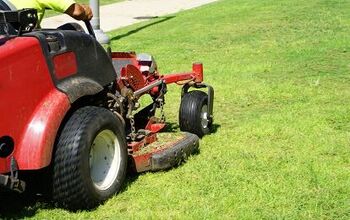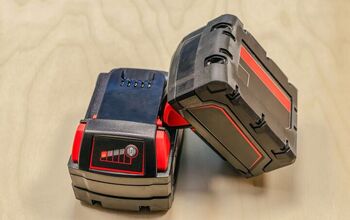12 Types Of Fruit You Shouldn’t Put Directly In The Refrigerator

When you bring fresh produce into your home, your first instinct may be to put it into the refrigerator. Keeping fresh fruits and vegetables cold in the fridge tends to keep them fresh for longer. There are, however, some exceptions to this rule. In fact, you should leave some types of fruit out of the refrigerator entirely.
Bananas should never go in the refrigerator, as it will affect their texture and turn them black. Tomatoes and avocados should only go into the fridge once they reach peak ripeness, and you should try to consume them before this happens. Tropical fruits including mangoes, pineapple, and papaya also can remain out of the fridge until ripe, as can most melons and stone fruits including peaches and nectarines.
Not all fruit is the same, and most fruit ripens at different rates and even in different ways. Furthermore, depending on where you live and the time of year, some fruit may be a week or more away from its peak ripeness. If you are sick of biting into hard and flavorless fruit, then keep reading. You will enjoy much tastier fruit if you stop putting the fruits listed below directly into the refrigerator.
12 Common Fruits That Should Not Go Directly Into The Fridge
1. Bananas
One fruit that most people know not to put directly in the refrigerator is a banana, and its relative, the plantain. Bananas are usually picked from banana trees weeks before they are ripe. They often feature a bit of green, which is a telltale sign they need time outside the fridge to ripen.
When you put bananas in the fridge, the enzymes that ripen bananas slow down or even completely stop. Additionally, bananas can start to turn to mush in the fridge and the skin will quickly darken. If your bananas become too ripe, peel and freeze them, but don’t put them in the fridge.
2. Pears
Pears are one type of fruit that are picked notoriously early. Unless a store has a surplus of pears, the odds of the pears you pick up from the grocery store are ripe and juicy are slim. Therefore, pears should be left out at room temperature in a fruit bowl until they ripen.
You will know your pears are ripe when pressing on them lightly gives a small indent. Once ripe, you should store your pears in the fridge, and eat them quickly.
3. Peaches
Peaches are a type of stone fruit that will stop ripening once they are put into a cold refrigerator. Therefore, if you buy peaches that are not yet ripe, you must leave them out if you want to eat juicy and sweet peaches.
If your peaches are rock hard, then they need time to ripen. Keep in mind that peaches can ripen quickly, and therefore you should check their progress daily. Once ripe to the touch, transfer them to the fridge.
4. Citrus
Citrus can vary significantly in its ripeness and its refrigeration needs. For example, clementines tend to be juicy and ripe, and should be refrigerated right away to avoid premature rot. Lemons and limes, however, are often rock hard at the grocery store. They can benefit from some time on the kitchen counter.
Even grapefruit and oranges can be left in a fruit bowl for a few days. Keep in mind this will speed up the maturity process. Therefore, if you want your citrus to last a long time, opt to put it in the fridge sooner rather than later.
5. Pineapples
Pineapple is a delicious yet awkwardly shaped fruit that rarely fits easily into a refrigerator. The good news is if you time things right, you won’t need to ever put pineapple in the fridge. This fruit is often picked early, as it comes from exotic regions like Asian, South America, or Hawaii.
Therefore, you should leave a pineapple out of the fridge until it starts to feel softer to the touch. Cut it up promptly, and then place the cut fruit into the fridge.
6. Avocados
Avocados have become one of the trendiest fruits on the planet. Their green color makes some people think they are vegetables, but they are actually fruit. Not only are avocados fruits, but they are also a fruit you shouldn’t put in the fridge until they are completely ripe.
Once you bring avocados into your home, allow them time to sit on the counter and soften. If you put them directly in the fridge, they will stop ripening altogether. If you need your avocados to ripen fast, put them next to your bananas, or in a paper bag.
7. Papayas
Papaya tastes drastically different when it is ripe versus when it is hard and immature. It’s imperative you let your papaya ripen at room temperature before cutting it up and putting it in the fridge.
A papaya should feel soft, and indent easily when pressed once it is ripe. When it feels ripe, peel off the skin, scoop out of the seeds, and store the papaya in an air-tight container in your fridge.
8. Kiwi
Kiwi is a tasty and tangy fruit, but it can be altogether sour and rock-hard if you put it in the fridge too early. If you brought home hard kiwis, do not put them in the fridge right away. If they are particularly hard, put them in a paper bag with a banana.
Once your kiwi softens up to your desired texture, you can store it in the fridge to halt further ripening.
9. Melons
Several types of melons can benefit from time on the counter before going into the fridge. Both honeydew and cantaloupe can ripen further on your kitchen counter. If you are sick of tasting hard and bland honeydew and cantaloupe, then consider leaving these melons out an extra few days. Once ripe, you should cut up the melon promptly, and store the cut-up chunks in the fridge in an air-tight container.
10. Plums
Plums tend to be rather hard at the grocery store, but this doesn't mean you should avoid purchasing them. Instead, you simply need to leave your plums out of the fridge until they soften up. Nerve put hard plums in the fridge, unless you like eating under-ripe plums.
10. Tomatoes
Many people believe tomatoes are a vegetable, since they are usually used in savory dishes, but they are technically fruits. Tomatoes are also rarely at their ripest when you purchase them, unless you grow tomatoes in your garden.
These red fruits are best left out of the fridge until they reach their peak juiciness. Note that tomatoes are never refrigerated in grocery stores. This is because they stop properly ripening at cold temperatures. Only refrigerate your tomatoes if they are ripe and you can’t use them right away.
11. Nectarines
Nectarines are another common stone fruit that you don’t need to put in the fridge right away, especially if the nectarines are hard. Unless this fruit is in season, they tend to be a bit on the hard side at the grocery store. To allow this fruit to sweeten and soften up, leave it out of the fridge until it feels softer to the touch.
12. Mangoes
Lastly, if you are a fan of juicy mangoes, but keep cutting into hard and tart mangoes at home, then there’s a good chance you are putting this fruit in the fridge too soon. Mangoes should only be placed in the fridge once you can easily push down on the skin.
Once a mango softens up, you can enjoy it immediately, or place it in the fridge for several days until you are ready to cut it up and enjoy it. Once your mango is cut, however, you should eat it within 24 hours, as this fruit can quickly turn mushy once cut up.
Final Notes On Fruit You Shouldn’t Put Directly In The Fridge
Your refrigerator is a great place to store items that you want to preserve for a long time. This doesn't mean everything should go directly into the fridge after you get back from the grocery store. There are many types of fruit that should be left out to ripen before going in the fridge.
Melons, stone fruit, and tropical fruits like mangoes and pineapple should be left on the counter until they reach peak ripeness. Avocados and tomatoes are not vegetables, but fruits, and they also should not be refrigerated until perfectly ripe. Bananas should never go in the fridge. Instead, keep them on the counter, and then freeze them if you can't eat them all in time.
Related Guides:
- Why Do My Berries Get Moldy So Fast (And How To Fix)
- How Long Does Asparagus Last In The Fridge? (Raw and Cooked)
- How Long Does Chili Last In The Fridge?

Tom Gaffey is an expert writer who currently resides in Washington D.C. Tom has a passion for real estate and home improvement writing, as well as travel and lifestyle writing. He lived the last twelve years in Hawaii where he worked closely with luxury resorts and event planners, mastering his knowledge of aesthetics and luxury products. This is where he found his passion for home improvement and a keen interest in DIY projects. Currently, Tom resides in Washington D.C, and also working on his debut fiction novel.
More by Tom Gaffey












![Finishing Basement Without Permit [Is It Really Illegal?]](https://cdn-fastly.upgradedhome.com/media/2023/07/31/9070078/finishing-basement-without-permit-is-it-really-illegal.jpg?size=350x220)














